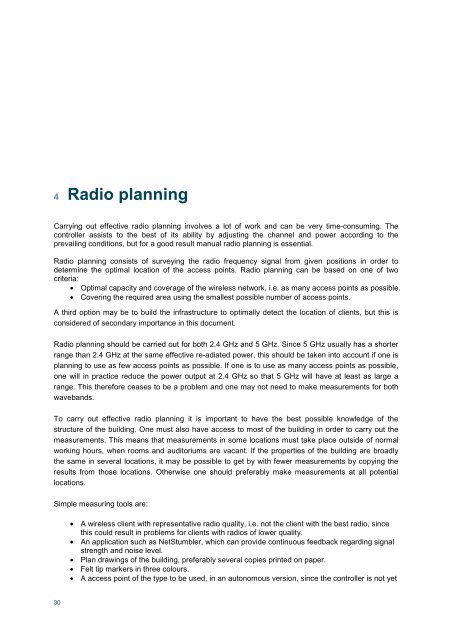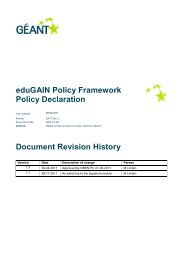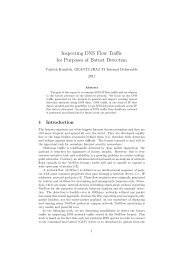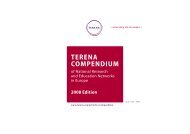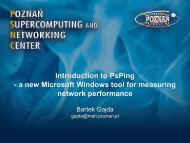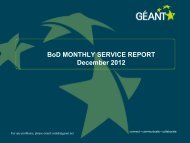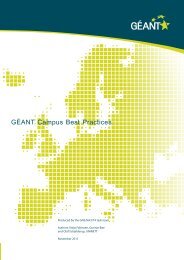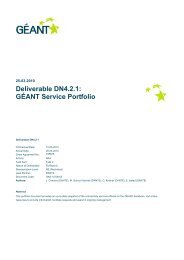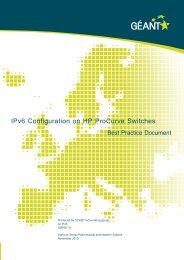Guide to configuring eduroam using a Cisco wireless controller Best ...
Guide to configuring eduroam using a Cisco wireless controller Best ...
Guide to configuring eduroam using a Cisco wireless controller Best ...
Create successful ePaper yourself
Turn your PDF publications into a flip-book with our unique Google optimized e-Paper software.
4 Radio planning<br />
Carrying out effective radio planning involves a lot of work and can be very time-consuming. The<br />
<strong>controller</strong> assists <strong>to</strong> the best of its ability by adjusting the channel and power according <strong>to</strong> the<br />
prevailing conditions, but for a good result manual radio planning is essential.<br />
Radio planning consists of surveying the radio frequency signal from given positions in order <strong>to</strong><br />
determine the optimal location of the access points. Radio planning can be based on one of two<br />
criteria:<br />
• Optimal capacity and coverage of the <strong>wireless</strong> network, i.e. as many access points as possible.<br />
• Covering the required area <strong>using</strong> the smallest possible number of access points.<br />
A third option may be <strong>to</strong> build the infrastructure <strong>to</strong> optimally detect the location of clients, but this is<br />
considered of secondary importance in this document.<br />
Radio planning should be carried out for both 2.4 GHz and 5 GHz. Since 5 GHz usually has a shorter<br />
range than 2.4 GHz at the same effective re-adiated power, this should be taken in<strong>to</strong> account if one is<br />
planning <strong>to</strong> use as few access points as possible. If one is <strong>to</strong> use as many access points as possible,<br />
one will in practice reduce the power output at 2.4 GHz so that 5 GHz will have at least as large a<br />
range. This therefore ceases <strong>to</strong> be a problem and one may not need <strong>to</strong> make measurements for both<br />
wavebands.<br />
To carry out effective radio planning it is important <strong>to</strong> have the best possible knowledge of the<br />
structure of the building. One must also have access <strong>to</strong> most of the building in order <strong>to</strong> carry out the<br />
measurements. This means that measurements in some locations must take place outside of normal<br />
working hours, when rooms and audi<strong>to</strong>riums are vacant. If the properties of the building are broadly<br />
the same in several locations, it may be possible <strong>to</strong> get by with fewer measurements by copying the<br />
results from those locations. Otherwise one should preferably make measurements at all potential<br />
locations.<br />
Simple measuring <strong>to</strong>ols are:<br />
30<br />
• A <strong>wireless</strong> client with representative radio quality, i.e. not the client with the best radio, since<br />
this could result in problems for clients with radios of lower quality.<br />
• An application such as NetStumbler, which can provide continuous feedback regarding signal<br />
strength and noise level.<br />
• Plan drawings of the building, preferably several copies printed on paper.<br />
• Felt tip markers in three colours.<br />
• A access point of the type <strong>to</strong> be used, in an au<strong>to</strong>nomous version, since the <strong>controller</strong> is not yet


